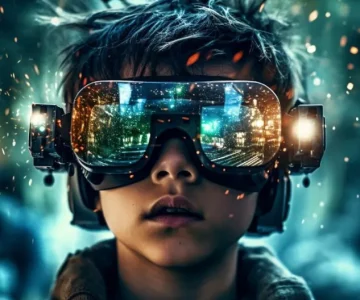Education today is evolving far beyond chalkboards and textbooks. One of the most exciting shifts is the rise of educational games, where play and learning merge to create highly engaging and interactive experiences. By blending entertainment with instruction, game-based learning offers students a chance to absorb complex concepts in ways that feel natural, rewarding, and fun.
Why the Trend Is Growing
In recent years, game-based learning has seen remarkable momentum. In 2022, the industry was valued at $11.5 billion, and experts project it could soar to $77.4 billion by 2032—an impressive annual growth rate of over 21%. This surge reflects a growing demand for more engaging educational solutions, especially as schools and universities search for innovative ways to meet the needs of today’s learners.
Turning Learning into an Experience
What makes educational games so effective is their ability to transform difficult topics into hands-on challenges. Rather than passively listening to lectures or memorizing facts, students can actively participate in problem-solving scenarios. Features like instant feedback, achievement rewards, and progress tracking keep learners motivated while reinforcing knowledge in practical ways.
Virtual reality is pushing these benefits even further, growing at a staggering rate of over 50% annually. Imagine exploring ancient civilizations in first-person, experimenting with chemistry in a safe 3D lab, or visualizing complex biology processes in real time. Tools like those offered by Axon Park make such immersive environments accessible to classrooms worldwide, giving educators the power to bring abstract lessons vividly to life.
Personalized Learning for Every Student
One size rarely fits all in education, and game-based learning excels in personalization. Many platforms now use artificial intelligence to adapt to each student’s pace and ability. If a learner struggles with a concept, the game can slow down, offer hints, or introduce alternative challenges. When the student is ready, it naturally progresses to more advanced material.
For teachers, platforms such as Axon Park simplify the process of creating custom learning paths. With the ability to adjust difficulty levels, provide immediate feedback, and address learning gaps early, these tools help educators ensure no student is left behind.
Collaboration in a Digital Space
Games aren’t only about solo achievement—they can be a hub for collaboration. Multiplayer formats encourage teamwork, communication, and strategic thinking, echoing real-world workplace dynamics. It’s no surprise that 88% of educators using digital games report higher student engagement. When learning feels like a shared mission, students become more invested and connected.
Redefining the Teacher’s Role
This shift doesn’t diminish the role of educators; instead, it redefines it. Teachers are becoming experience designers—crafting and curating interactive lessons rather than simply delivering lectures. With AI-powered tools that generate curriculum-aligned materials, educators can focus more on guiding students and less on repetitive administrative tasks. The result is a more impactful, personalized, and scalable approach to teaching.
Looking Ahead
Western Europe currently leads in adopting game-based learning, holding nearly half of the market share, but interest is growing worldwide. As technology advances and schools increasingly embrace this approach, educational games are poised to become a cornerstone of modern learning—making education not just informative, but genuinely inspiring.





